I have been planning for some time to do a series of posts inspired by Japanese influence. I hope you’ll enjoy these posts, with interesting facts, fun projects, and even a couple of giveaways later this month. These posts will be sprinkled around other post subjects over the next month or so, with gardens, sewing projects, a quilt design, recipes and more, all inspired by Japanese culture. Today we’ll go back to Cheekwood Gardens in Nashville for a visit to the lovely Japanese garden there.
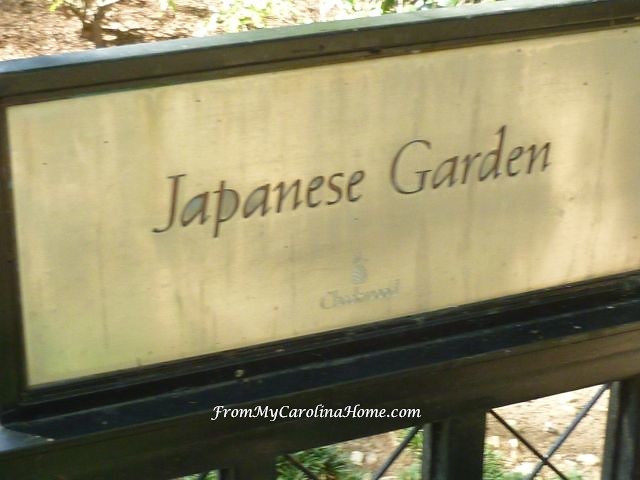
Japanese gardens have some common elements, one being the art of building anticipation as you walk toward the garden. This is achieved by creating curves in the path, or an elevation change to hide the destination and build up expectation.
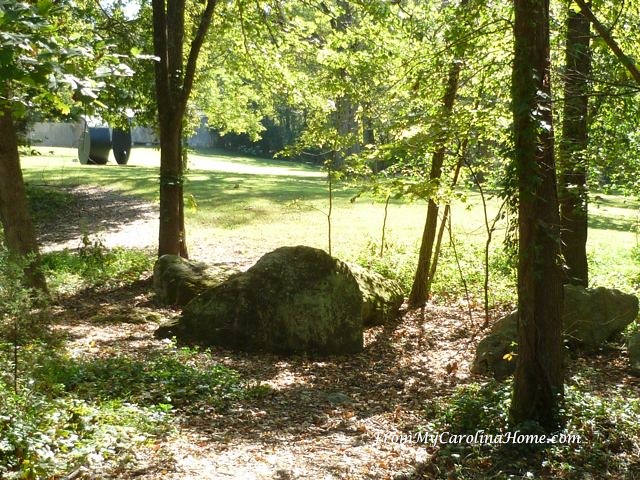
Karesansui teien is the Japanese phrase for depicting a pond with sand or gravel. A glimpse of the dry pond is seen from the path. Building anticipation with just a partial view is called miegakure.

The path curves again, and over a small rise in elevation, another glimpse of the garden yet to come. The stone object on the left is placed in the tradition of catching your attention with a jinriki, a man made object, as a means to mark a place to stop and observe.
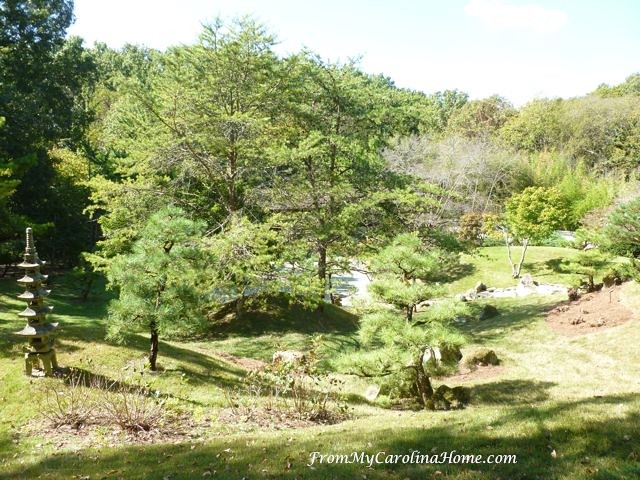
This was the first marker that gave an overview of what was to come.

In the Japanese garden, only a few man-made objects are placed, and only to draw attention to a view or a feature.
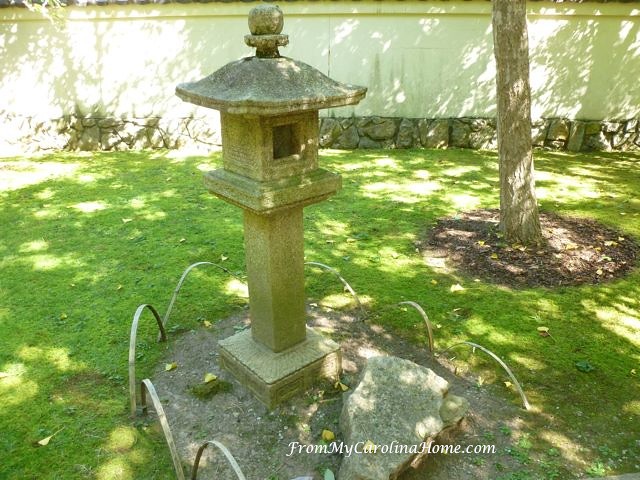
This lantern draws attention to the entrance to the pavilion.
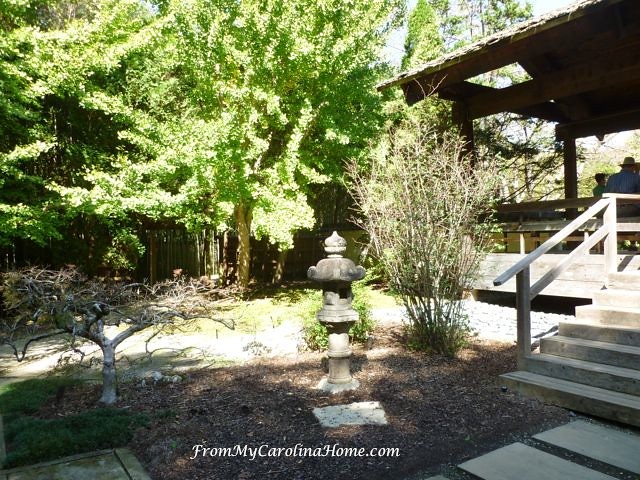
The marker describes the Shõmu-en style garden, meant to be viewed from only one place.

Notice the play of light and shadow, that will change as the day advances.
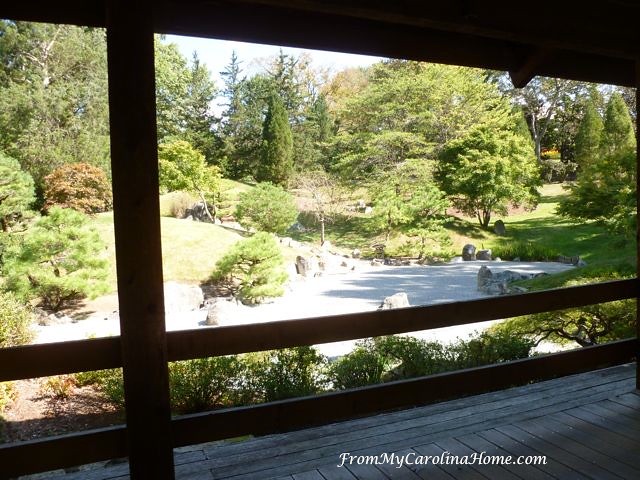
A pattern of ‘ripples’ is raked into the gravel around the stones called aranami-mon with straight line patterns in a checkerboard called ichimatsu-mon.
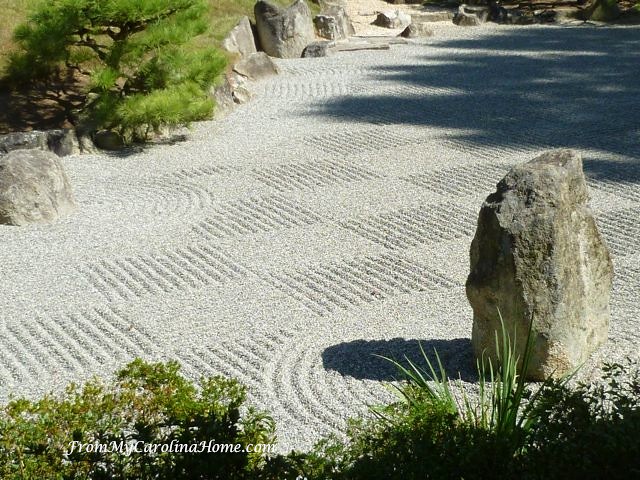
It is a quiet, contemplative place. Note the stone wall on the right outside the pavilion, meant to hide the garden from view from the pathway.

Visiting in a colder month, some of the deciduous trees had lost their leaves, and the beauty of their forms could be appreciated.
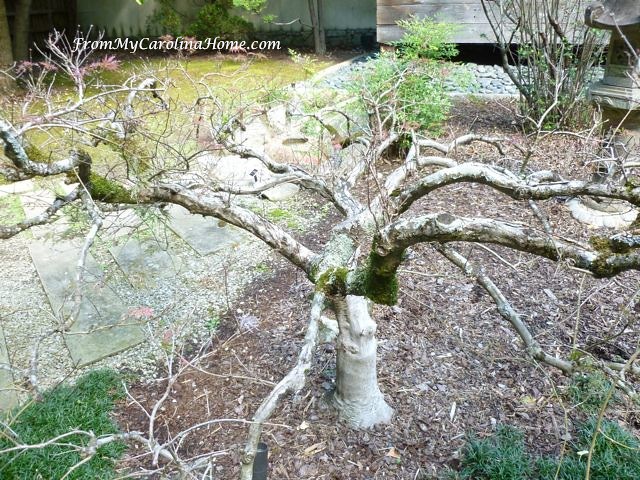
One last look at the garden, with the stones along the edge.
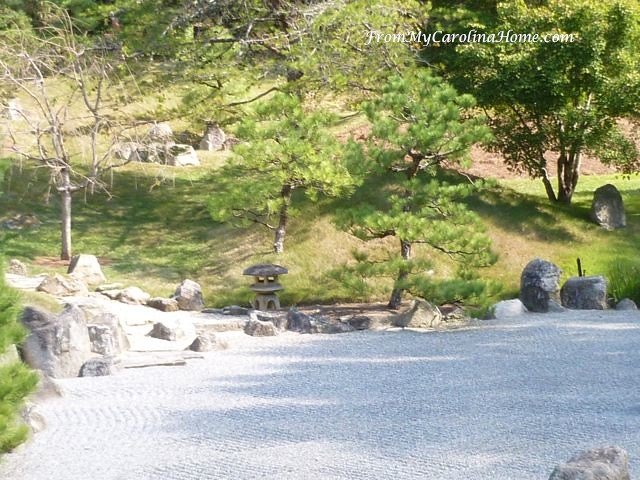
Leaving the pavilion, a bamboo grove lines the pathway.
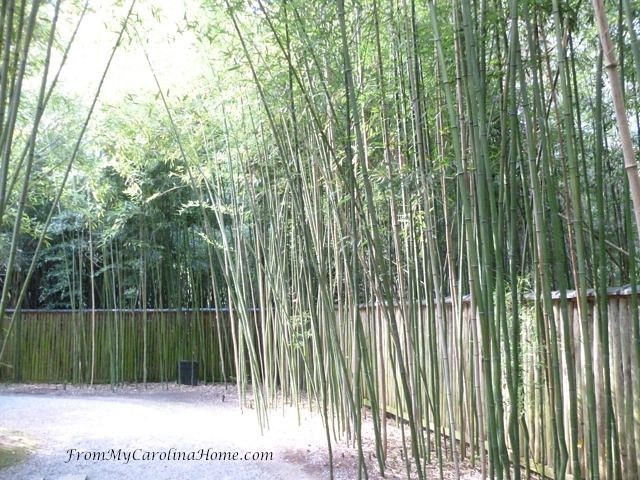
Carefully placed stepping stones define the path. An Oribe Lantern is a stone lantern placed in the garden to mark a place to stop and observe. The stone lanterns are named for a 16th century warlord and tea ceremony master responsible for designing stone lanterns for gardens.

Japanese gardens are designed to make the observer slow down, contemplate the surroundings, calm the mind. To appreciate the beauty of simple things, see each element on its own and as a part of the whole. I think it is this more than anything that draws me to this style, appreciating the little things, observing the beauty all around us. Konnichiwa! (good day!)

At home, it is the ideal time for planting seed beds now, and I got busy on that project this week too. The red amaryllis doesn’t look like it will bloom this year, so I may repot it when the weather gets warmer. The hyacinth bulb gave me a small flower spike, in my favorite white. It had such a lovely fragrance. Other than that, not much going on in my garden yet.

Do you enjoy Japanese gardens?

Beautiful! I am so looking forward to your posts on Japanese culture. Our son and his family just moved from Chicago to Japan for 4-5 years. I need to learn all about it. Thank you.
I love those stone lanterns. There is so much variety their design. And I have never seen a checkerboard raked garden! That is beautiful!!! I would love to visit that garden some day.
Thank you for the tour and explanation. I am not sure that I have ever been to a real Japanese garden, now I am very curious to find one!
Thank you for sharing your pictures. I visited Cheekwood Gardens several years ago and have always wanted to return, and I did today through your pictures:)
Lovely post! The raked gravel in crosshatch and curves would make a wonderful FMQ motif.
Well you’ve done it again! I thought I’d breeze thru your photos, really didn’t have much interest in a Japanese garden, tho I’ve seen my fair share here in the states. But. . . I was captivated at the first photo! Didn’t think a winter look would be so interesting, but I went thru those pictures twice already! Glad I gave it a try!
I really love your post today and learned a lot about Japanese Gardens. I’ve been to several but now want to visit one soon in Spring. You write the very best posts.
I love to go to the Japanese garden we have at the Missouri Botanical Gardens. It is so beautiful ♥ The whole place is and I can spend and entire day there. Their Iris display in the Spring is breath taking. Thanks for sharing your visit with us.
Very beautiful. I’m sending this post to my friend, who is Japanese, and I’m sure she will enjoy it as well. Thank you, Carole.
Beautiful! If you ever have the chance, visit the Frederick Meijer Gardens in Grand Rapids, Michigan. It’s a huge place, with a museum, very large sculpture garden, and several special gardens. Their Japanese garden is spectacular…..we spent a couple of hours just in that area. We went to Grand Rapids for the AQS show in August…good excuse to visit the area!
So serene and beautiful. I loved the gardens in Japan, but mostly in monuments and parks. Private homes had very few opportunities in the city because of the lack of yard space, but often every sq inch was filled with pots and plants… Our friends had a large garden in the back filled with bonsai and a (NOW!) hundred year old wisteria over their pergola that was so beautiful, they had a special party beginning of May for its full bloom. And the gravel water art: such a subtle art and requiring such agility and balance to do the gravel raking without messing another part of your work. Inspiring. Oh, and the National Arboretum in Washington DC had a Japanese garden in the 80’s, with 300 year old bonsai on loan from Japan. I wonder if it’s still there? they had a large koi pond and typical Japanese plantings, the arboretum is a haven of quiet in the midst of DC.
I didn’t know those interesting facts about Japanese gardens. I hope I get to see one some time.
Hello Carole; I enjoyed every part of your post today! I have no memory of visiting a Japanese Garden before. So reading and seeing the pictures you have shared was an amazing treat. I do hope that I get to have the pleasure of visiting a Japanese Garden in person one day, because you have shared in such a way that it makes me want more. I therefore am really looking forward to your future posts on Japanese Culture! Have a splendid day Carole!
What a pretty garden. I enjoy the pond that is not a pond! Such a treat to look at these photos one such a miserable day of sleet and rain. I have nothing new growing. I need to wait for more light before I can start propagating and repotting some of my succulents. Have a good one!
I absolutely love a Japanese garden design! Meanwhile it couldn’t be further from the reality of my garden, crazy cottage style that it is! Beautiful post, Carole!
Carole, these photos are beautiful
This does look like a nice garden to walk around. I love the gravel pattern. I suppose 2.5 year olds are prohibited from the area hahaha
That is rather an interesting fact that these adorable concrete lanterns are named after a Warlord/tea ceremony master. Just wow, …. I think.
This is absolutely wonderful, Carole. I love gardening, and the Japanese concept of gardening is quite spiritual. Thank you for sharing this.
What a beautiful peaceful place. Thank you for sharing.
I always love a good garden tour and this place looks beautiful! I wonder how hard it is to keep people (kids) from touching that gravel area. I think I would be tempted myself! I always love seeing the wonderful places you find. Thanks for linking up to Take Me Away this month! Enjoy your weekend!
Shelley